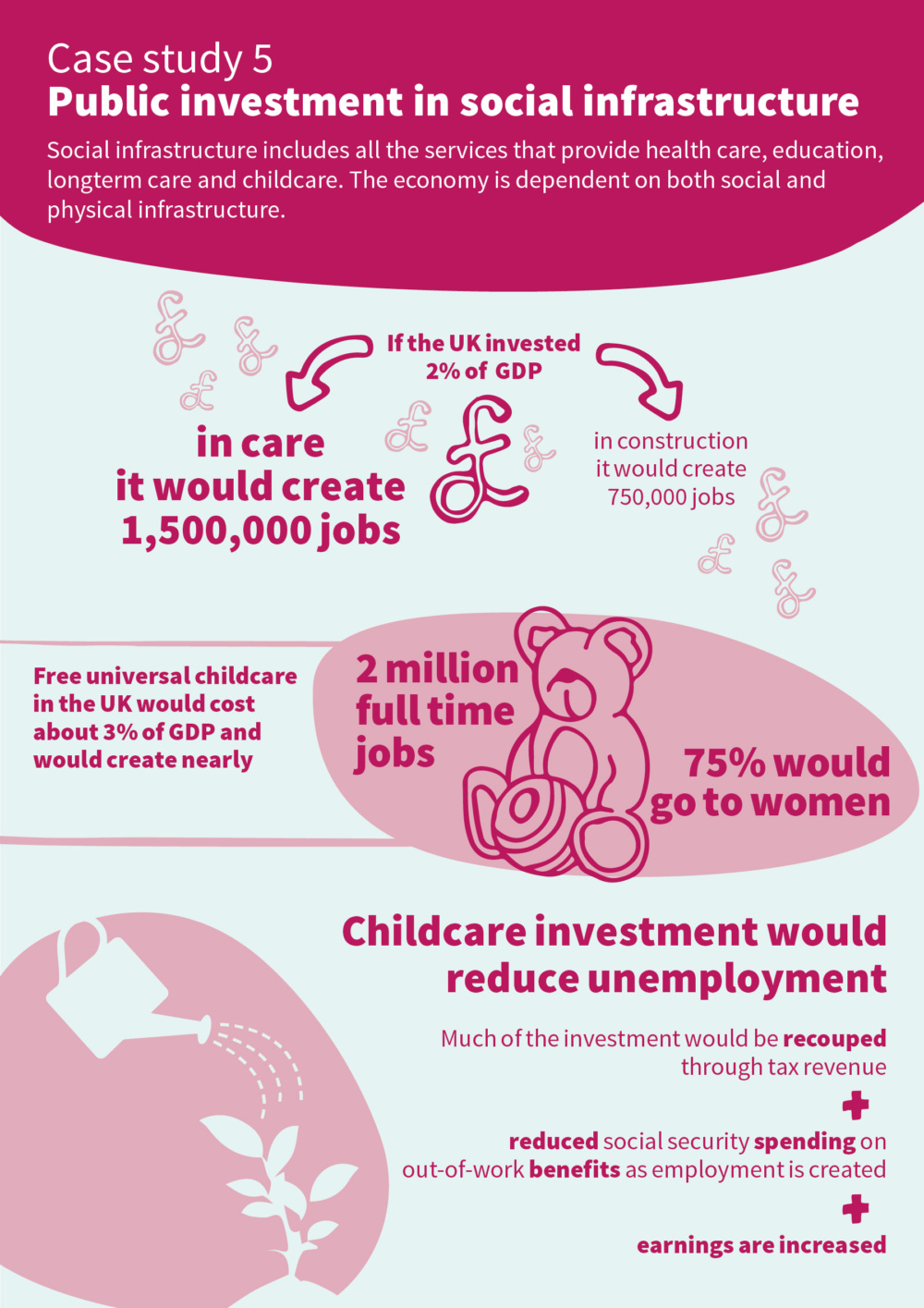Social infrastructure includes all the services that provide healthcare, education, long-term care and childcare. These services can be counted as infrastructure because they have benefits to the whole community and not just their direct recipients. A majority of women are employed in such services and a majority of users of public services are women because of their caring responsibilities. But most of all, women have been producing these services themselves for centuries unpaid and continue to do so when public services are withdrawn, as has been the case during the austerity period that many countries have implemented following the financial crisis of 2007/08.
Despite fiscal tightening, many governments have accepted the need to continue to borrow to invest in physical infrastructure. Indeed, the Keynesian approach adopted by many countries is to give a short-term boost to a frail economic recovery through large scale public works such as building bridges, roads, railways and telecommunications as well as housing. This is considered investment because it is spending which is durable and yields positive returns into the future¹.
Public investment of this type creates jobs both directly in the sector where the spending takes place and in the industries that supply raw materials and services needed to deliver projects. One effect of this new employment is that household incomes are increased and so they have more money to spend on goods and services such as food, clothing and entertainment.
In this way government investment expenditure can have an expansionary impact on overall demand, help lift economies out of recession, and create jobs, enhancing overall wellbeing. The advantage of this strategy is that in time the initial investment should pay for itself by generating benefits worth far more to society than it costs. This then justifies the initial increase in the public deficit to cover any investments. The key question is where should this investment take place?

